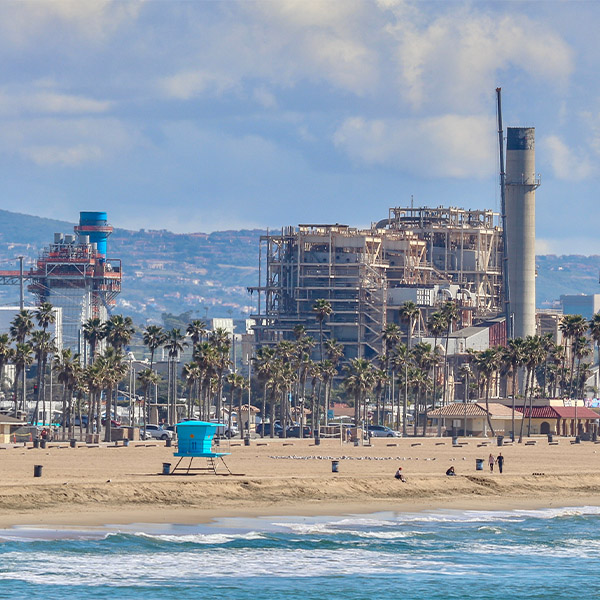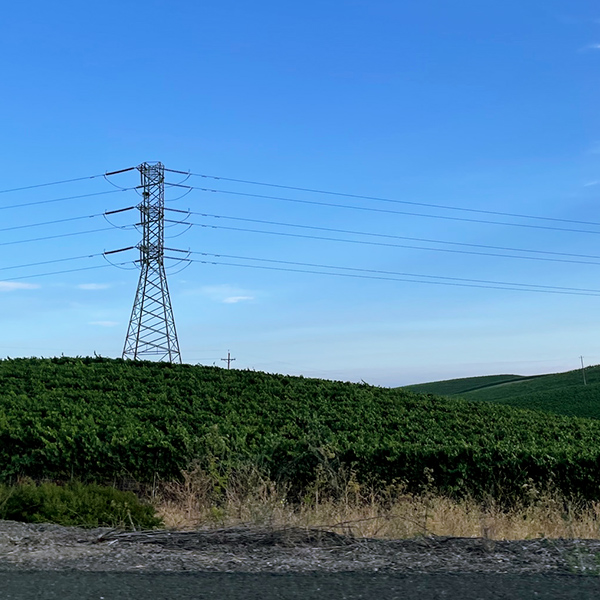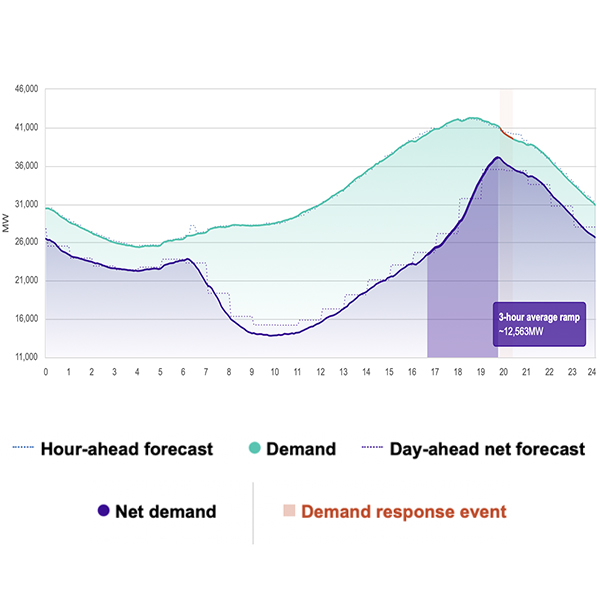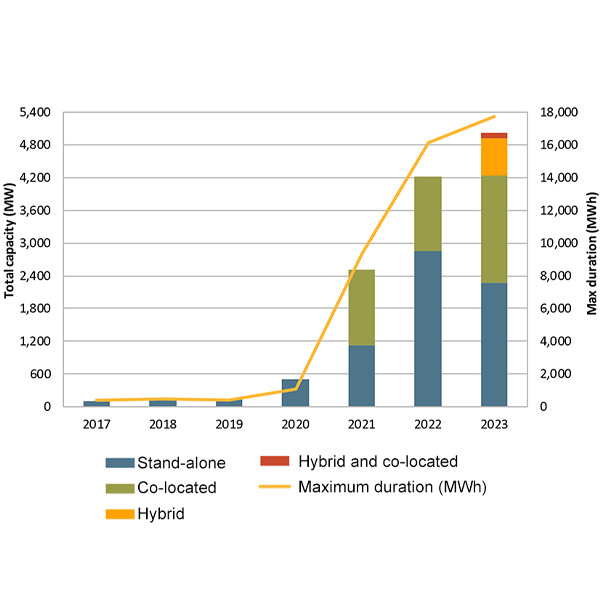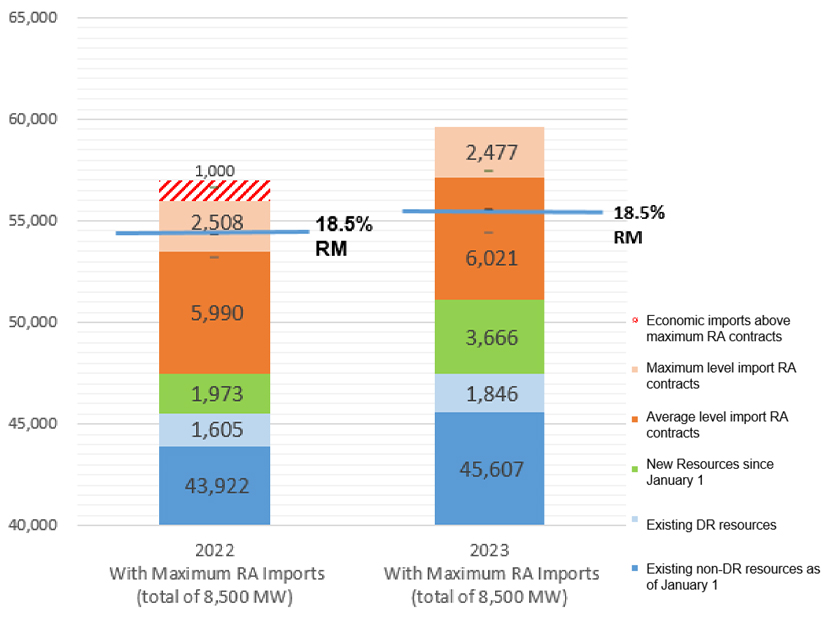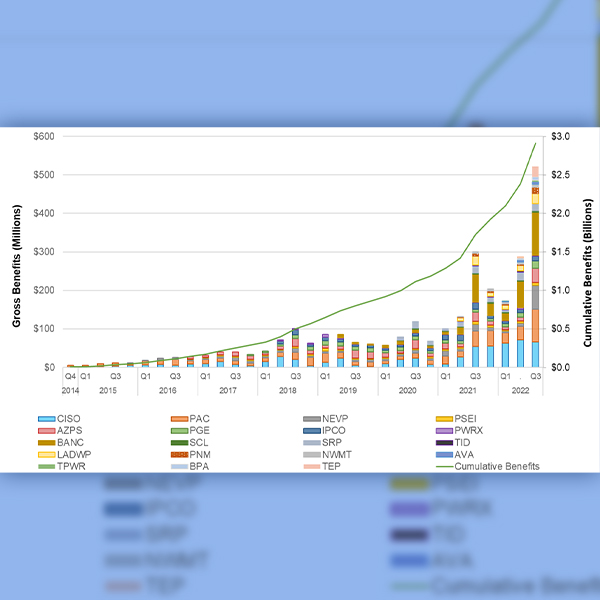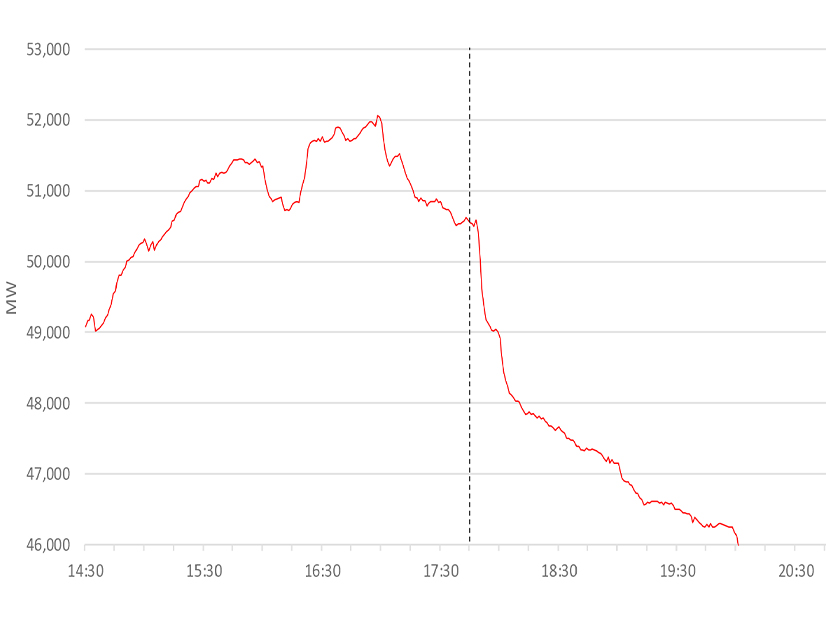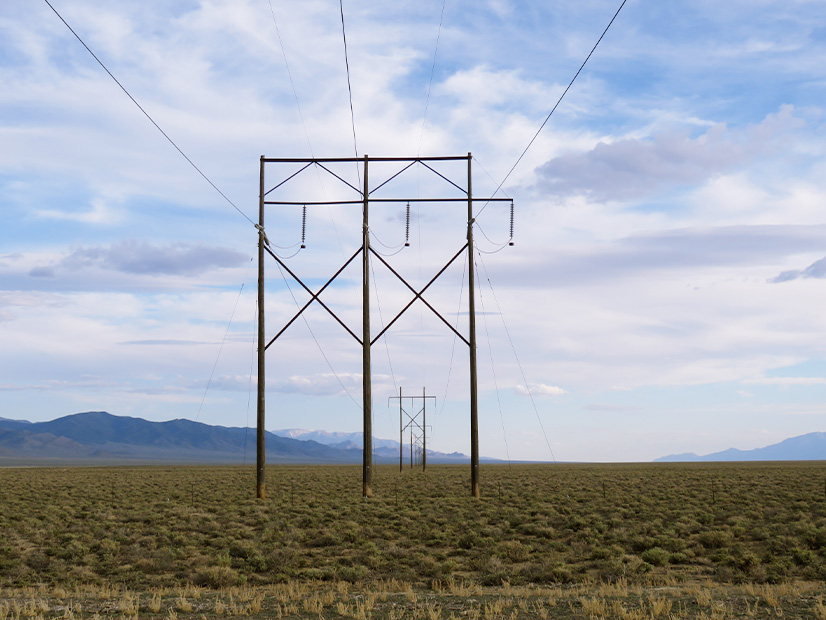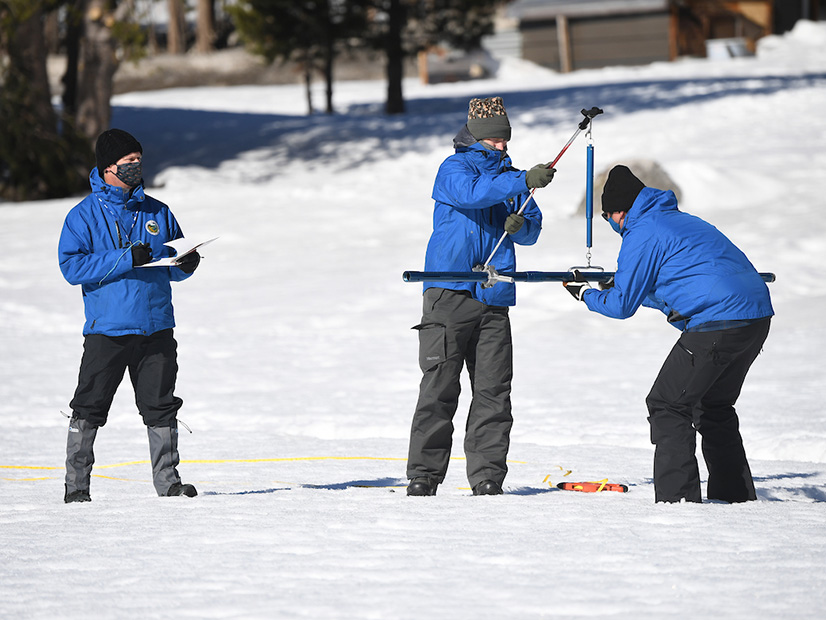Western heat waves
The California Energy Commission agreed to keep three old, environmentally damaging gas-fired plants operating along the coast for grid reliability, despite an outpouring of opposition.
CAISO declared an EEA watch for a second straight day, citing “uncertainty” about energy supply and load forecasts, transmission constraints and high electricity demand in the Western U.S.
CAISO issued its first energy emergency alert of the summer after falling short on ramping capacity as solar output rolled off its system.
The more than 5,000 MW of batteries connected to the CAISO grid are playing in increasing role in maintaining reliability, a report from the ISO's Market Monitor shows.
The Western summer reliability outlook is better than in recent years, but shortfalls could arise because of supply chain problems or scarce imports, WECC says.
CAISO says that 8,100 MW of new resources and California's record snowpack, which is expected to increase hydro generation by 72%, improve its summer forecast.
CAISO's Western Energy Imbalance Market reached a record $526 million in benefits in Q3 and neared $3 billion in cumulative benefits since it started in 2014.
CAISO said it avoided September blackouts through a combination of public conservation, imported electricity and coordination with utilities and agencies.
CAISO issued a straw proposal for its extended day-ahead offering in the Western Energy Imbalance Market, a renewed effort at greater Western regionalization.
A dry January and February are clouding the prospects for hydroelectric generation this summer following two years of severe drought in California.
Want more? Advanced Search
